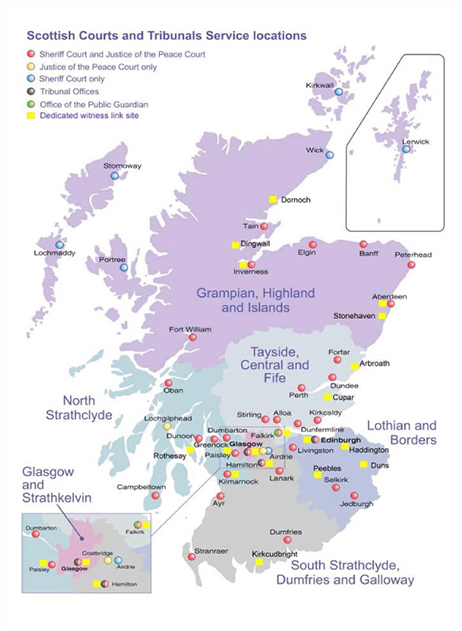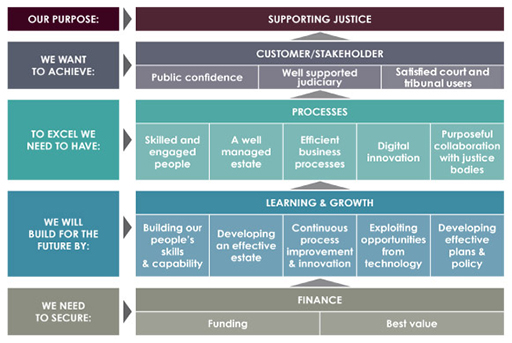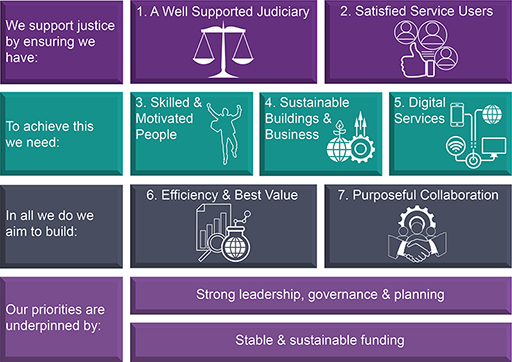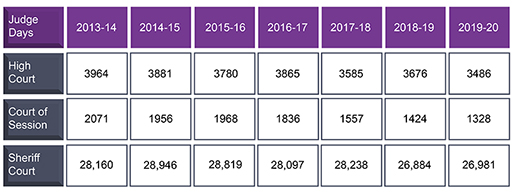2 Behind the scenes
A great deal of administrative work goes on behind the scenes of a court room to make surethat a case runs smoothly, for example, that all the evidence needed is available, and that witnesses will be present on the correct day. The administration of the Scottish courts is undertaken by The Scottish Courts and Tribunals Service (the Service). It is responsible for ensuring that court business is conducted effectively. It employs the administrative staff who deal with the day-to-day work of the courts and ensures appropriate accommodation is available for court business. This is a substantial undertaking and a costly one.
The Service generates some of its income through civil court fees but most of it comes from direct government funding i.e. from public funds. Figures 2 and 3 highlights the strategic priorities of the Service and how they change with time. These indicate how it will meet the needs of the justice system in Scotland ensuring fair and effective administration, and access to justice while also ensuring best financial value. The Service's annual reports measure how these priorities are being achieved and can be found on the Scottish Court and Tribunals [Tip: hold Ctrl and click a link to open it in a new tab. (Hide tip)] website under the reports and data section.
The workload of the Scottish Courts and Tribunals Service, judges and the other individuals involved in the legal system depends on the number of legal disputes that arise and whether they are classified as civil or criminal. Figure 7 shows the number of judge days (days on which judges sat in court to hear cases) from 2013 to 2016.




